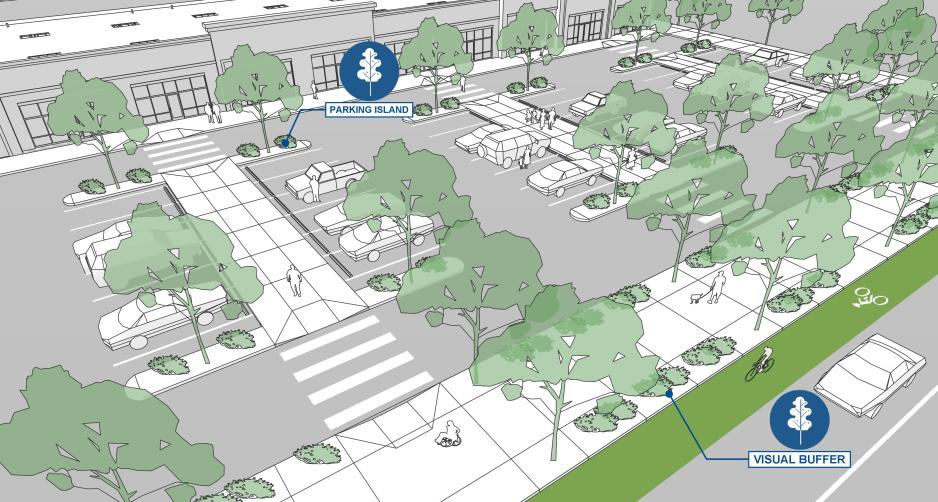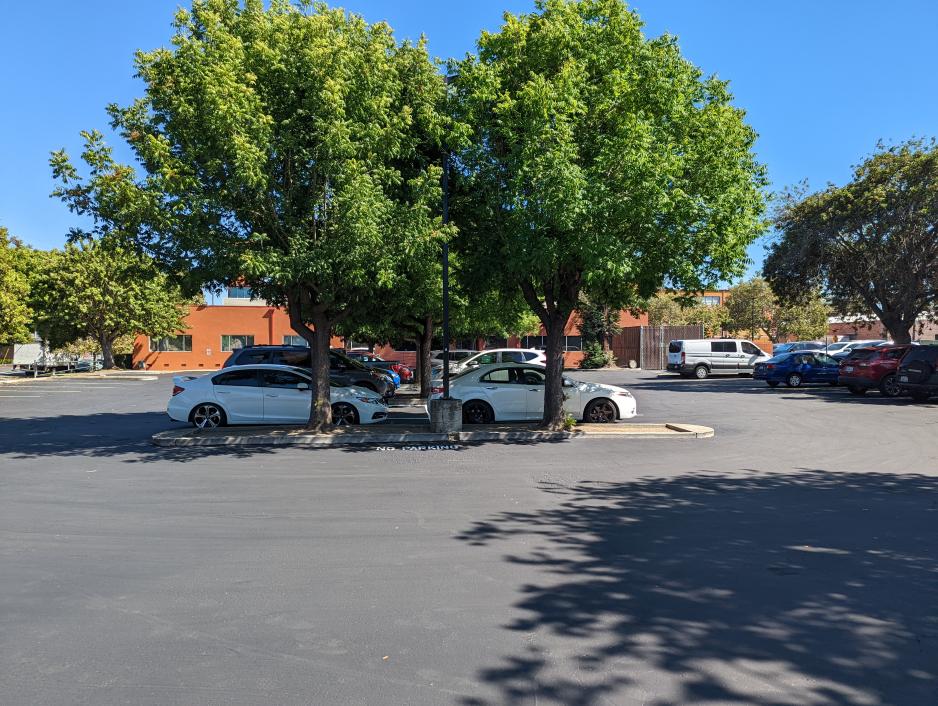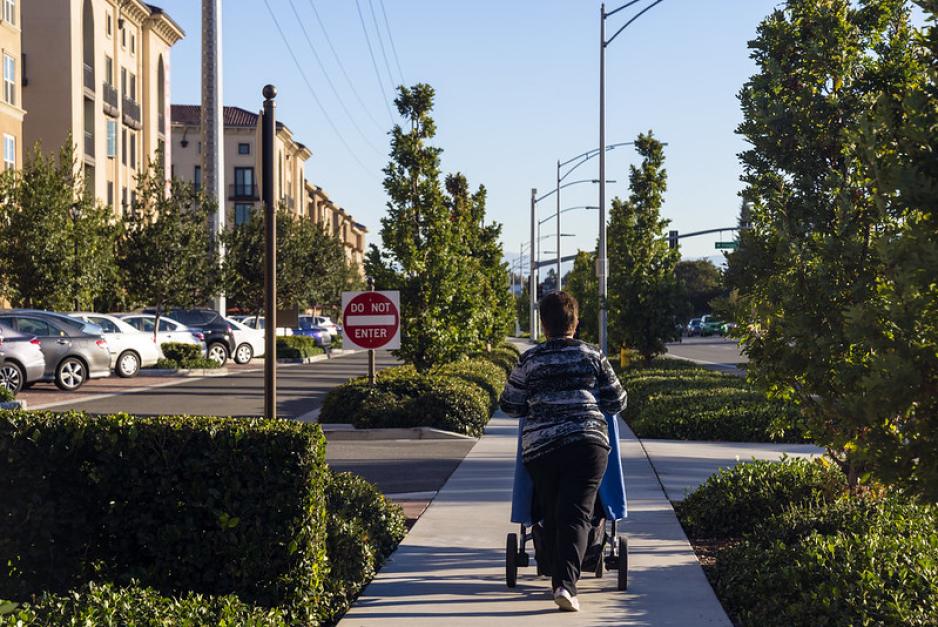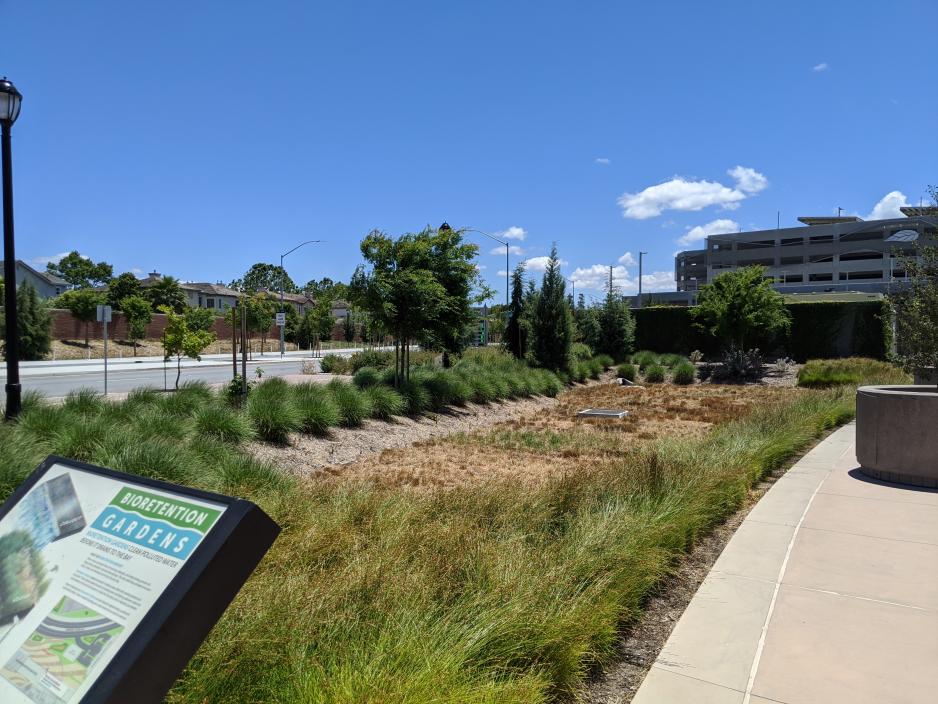Design off-street parking to maximize visual buffers and landscaping where applicable. Landscape materials, art, visual buffers, or other aesthetics are effective tools to minimize the visual impacts of surface or structured off-street parking.
Provide internal parking islands with trees wherever possible to divide masses of pavement, provide shade, and mitigate heat island effect, as well as external landscaping to visually buffer the parking area from streets and other facilities.
Body
Minimize use of tall shrubs in favor of lower shrubs and groundcovers to allow for greater visibility within a parking area for pedestrian and vehicular safety. Clear lines of sight minimize the risk of pedestrian and vehicular collisions. Mass planting of low shrubs and groundcovers provides an aesthetically pleasing design with minimal maintenance.
Select native, non-invasive planting that can thrive in areas with urban development and support sustainable water use.



